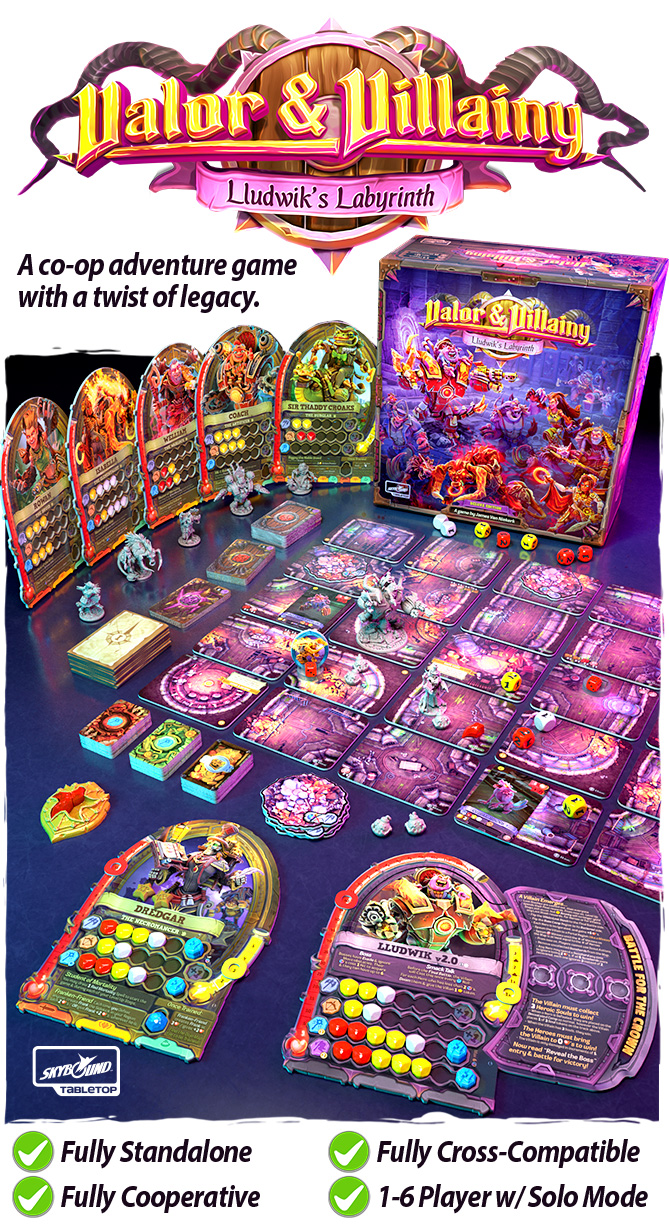Jun 25 | 20215 Tips on Designing a Legacy Campaign
Today I am detailing my 5 main lessons-learned while designing a legacy style dungeon crawler called LLudwik’s Labyrinth (which you can learn about here).
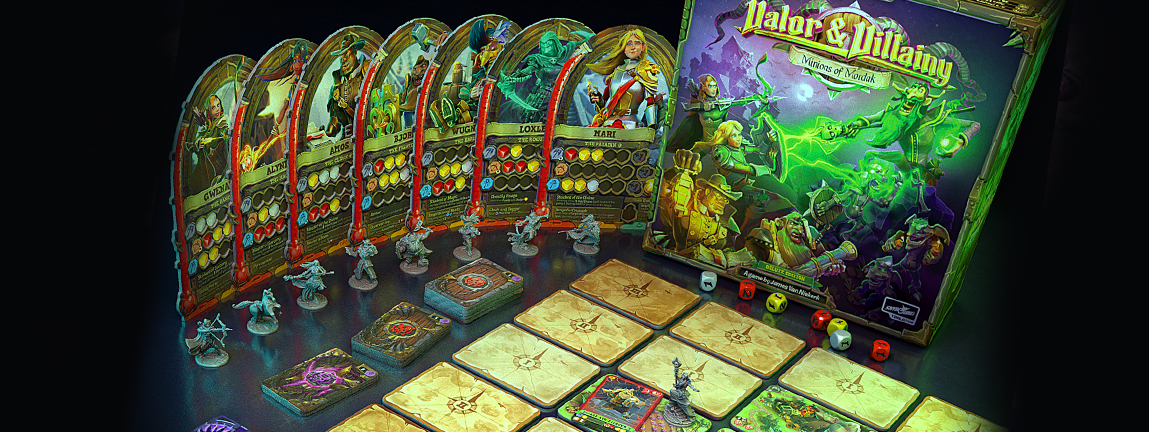
1) Start with a base game that is solid.
I have heard Rob Daviau and Matt Leacock both reference this on Podcasts, but the idea being -if you are building up a game into a full campaign, you need to make sure your foundation is solid. A campaign is a very big task that requires a lot of testing, and breaking it apart to fix its foundation is not always an option.
Thankfully, Lludwik’s Labyrinth used the core system from a base game: Minions of Mordak, so I was able to know this base would work well. I was also able to correct a few things that were receiving criticism. If it is an option, I would really recommend adding a campaign to an existing game.
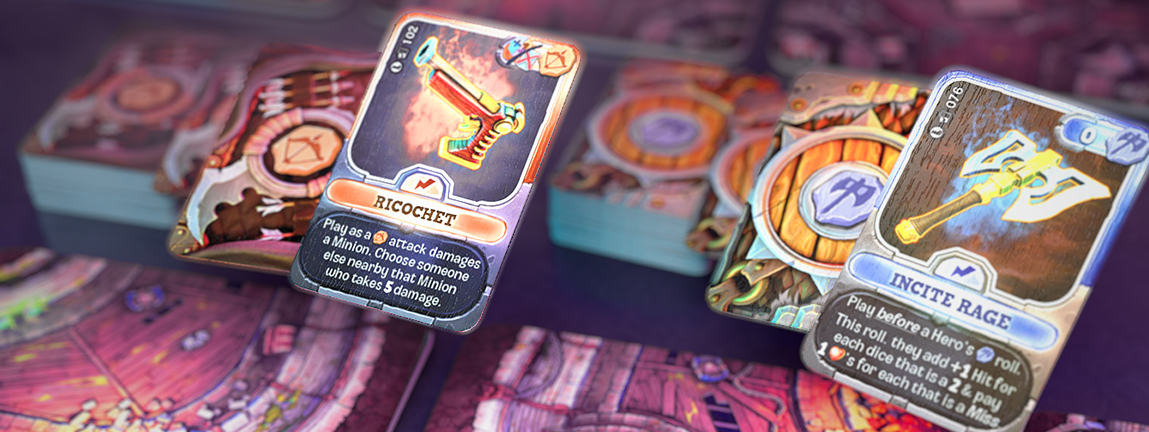
2) Design your components, then partition them.
My process here started by designing a “game stew” and throwing all the mechanics into the pot until it was “tasty”. This allowed me to make big iterations to a lot of bits with every early playtest. Then as I began designing the campaign, I looked at the whole stew (which is essentially what the game looks like at the end of the campaign), and I started chopping.
- I stripped out everything that wasn’t essential to playing the game, and this became the tutorial
- I cut my spell decks down to the smallest number of cards possible, and the remaining cards became divvied out as unlocks over the campaign.
- I looked at all the enemies and keywords and tried to group them up in incremental steps which I could unveil over each new session.
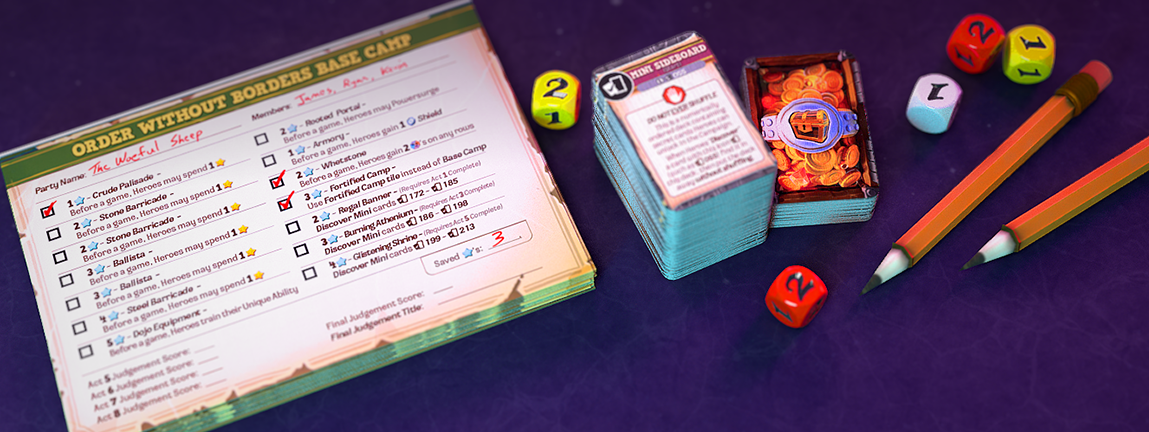
3) Your campaign is an extended tutorial.
On the first page of the rulebook, it says to “stop reading and set up a tutorial mission”. This mission has a small deck of cards which you flip over 1 at a time in order to move a character around the map and learn the basics. After this tutorial you’re encouraged to read the rules, but it means you are reading them with a good context of how they are applied. So far our reviewers have only met this approach with extreme positivity!
From there, each act adds a new mechanism and tutorializes it right away.
In this way you are hand held through baby steps to learn the game, and it keeps you excited to return to the game to see something new!
When you teach a new mechanism like this, it is important you only teach it one way. An example of this, is a mechanic called Cave-ins…
- I wanted to make a mission that focused on Cave-ins when they are introduced, and my first take at this was “normally cave-ins deal damage in their tile, but in *this* mission they deal damage to all nearby tiles as well!”
- This was a mistake, because it’s both teaching and un-teaching a mechanic at the same time.
- It was better to create more events which laid down Cave-ins, than to change the way they function. We’ve already taught you Cave-ins, and they are fun. Let’s just make this mission force them to be problem for you!
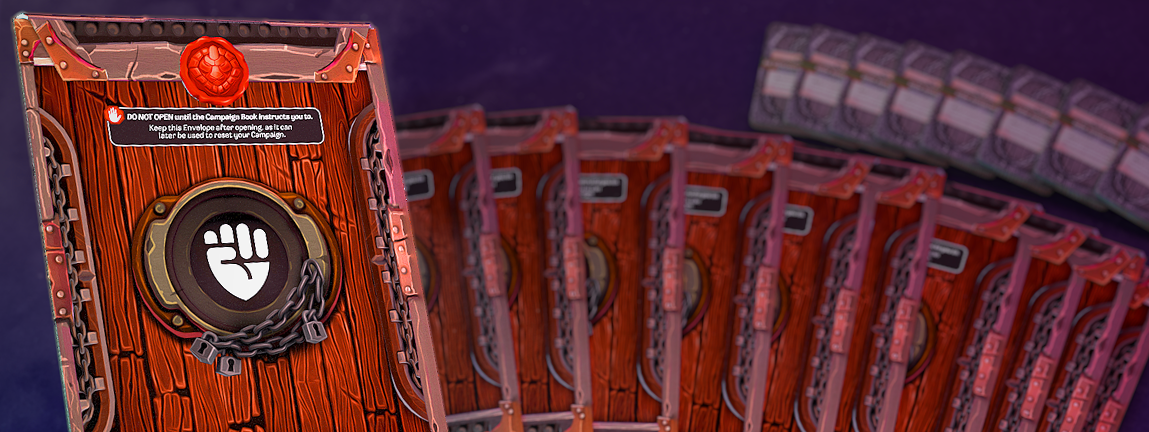
4) Unlock content, not always power.
You want to be cautious as you are adding and adding content that you are not reinventing the game balance as the campaign unfolds. My game here is an RPG game, and you level up your characters and gain power every single turn. This aspect actually resets every mission of the campaign, although I have 2 main things that do not reset:
- Party-wide upgrades (which are purchased using communal resources you earn, and give heroes start of game bonuses that really do accumulate power)
- Then Discovered Spells, which are brand new spells that get unlocked by events and choices within the game. They are added to your repertoire for all future games. These really give you a sense that you’ve found something new, without necessarily adding raw power to your heroes. The spells are all math-balanced to each other. So just because you discover it late game doesn’t make it inherently more powerful than spells you started with.
Which leads me to my final point…
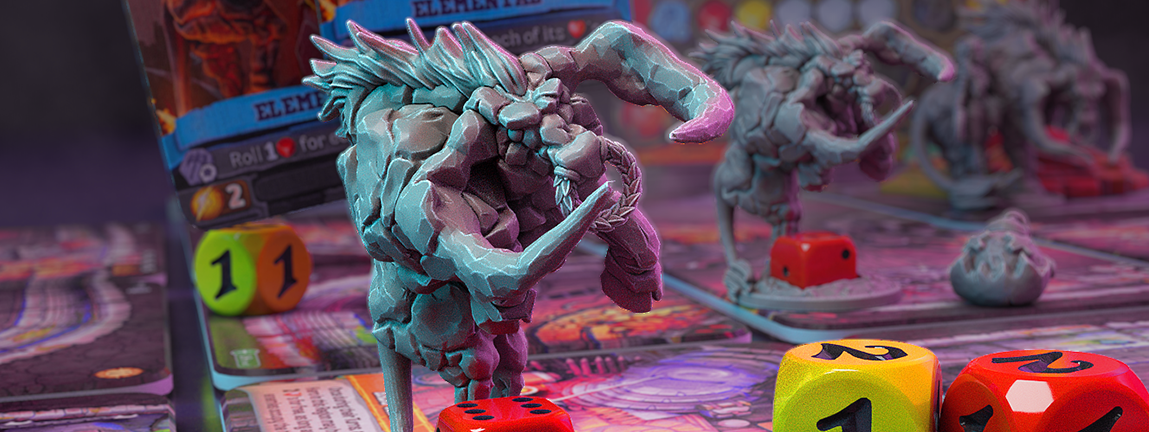
5) Balance with math, not hours!
I cannot stress enough how dissecting my game with some quality spreadsheets has helped my design! If I know an attack spell should always deal 1.5 damage for every 1 cost it has, I can write new spells, and have a pretty good idea of their balance by how they look on paper. There will always be surprises when you realize your math is wrong, but this approach produces a very accurate first stab at things, and will also (very valuably) allow you to compare cards you think might be broken to see if the math shows a problem. By using math to establish a balanced bar, you can sidestep the need for using hours and trial and error to suss out the same result.
Another big advantage to using math, is for player-count scaling. Lludwik’s Labyrinth plays from 1 hero to 6 heroes, which is a huge variance of power output every turn. How this was achieved under the hood, was…
- I assigned a “challenge rating” to each of the 3 enemy decks.
- Enemies stats, damage, health and abilities factored into this rating, and I made sure each enemy in each of the decks was a similar difficulty mathematically.
- I created event cards which output a certain number of “challenge rating” during the early / mid & late game. In this way I can playtest a bunch at 3 heroes, find out a challenge rating per hero that feels right over a game, and then scale it up and down to suit all player counts.
This math will not always scale perfectly, but it gets you a really close first kick at the can, and when you need to playtest an entire campaign, that is a crucial thing!
I hope my 5 lessons learned here give you a little insight into your own designs! I would thank our developer Brian Neff, whose extreme talent and experience has taught me pretty much all of these concepts! Designing a campaign was a whole ton of fun, and really allowed me to story tell in a way that I never could before!
Do you like legacy style games? Do you disagree with my tips? What is your favourite part of playing a game with legacy aspects? Let me know in the comments, and thanks for reading!
This post is about Valor & Villainy: Lludwik’s Labyrinth, a 1-6 player co-op adventure game which is live now on Kickstarter!
